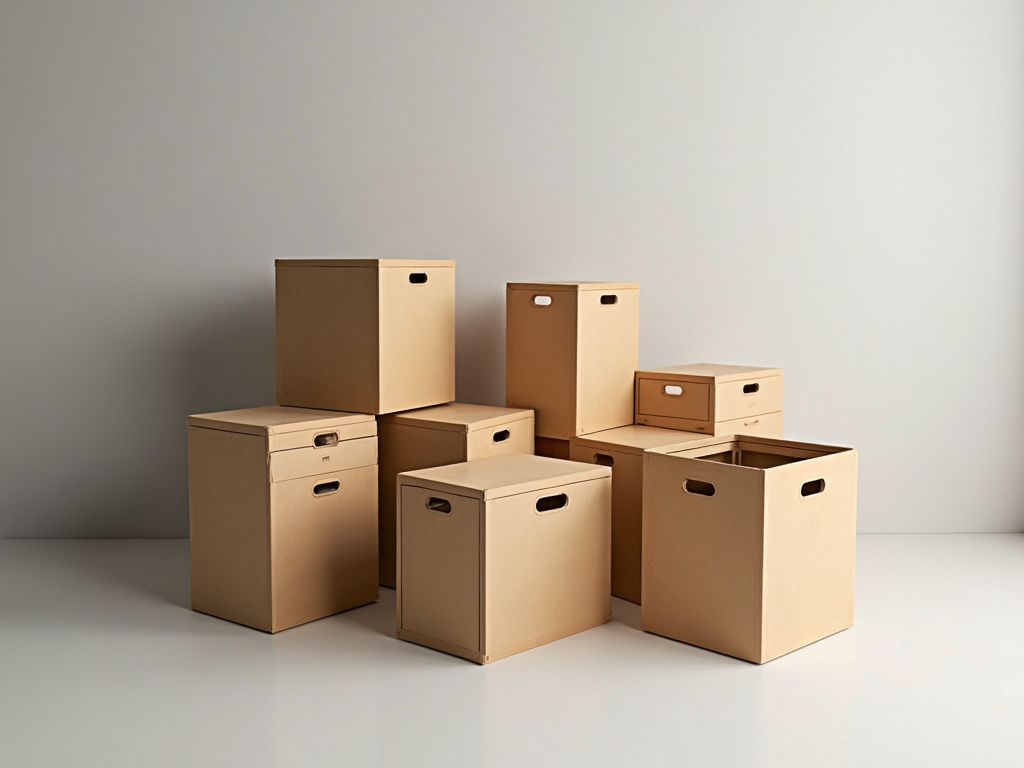Quick facts
Can't find the answer you're looking for? Please get in touch with our friendly team.
How do you store large amounts of paper?
To store large amounts of paper, use filing cabinets or storage boxes. Organize papers by category or date, and label each folder or box for easy access. Consider using acid-free materials to prevent deterioration, and keep them in a cool, dry place to avoid moisture damage.
Category Overview
Introduction
File boxes play a crucial role in organizing and protecting your important documents, making them an essential addition to any home office or study area. By providing a dedicated space for paperwork, they enhance your everyday life by promoting order and efficiency. A well-structured file box not only adds utility but can also serve as a decorative element, merging functionality with style to create a clutter-free environment.
Functionality
The primary function of file boxes is straightforward: they hold and organize files, papers, and various documents, ensuring you can easily find what you need when you need it. You might use them in different contexts—such as in the living room for personal documents, the home office for work-related paperwork, or even in the garage for storing receipts and warranties. Some file boxes come with unique features like built-in labels or adjustable dividers that allow you to customize the internal layout according to your needs, maximizing space usage while keeping everything tidy.
Design & Style
File boxes come in various styles and materials to suit any decor theme. Common materials include wood, sturdy cardboard, metal, or even durable fabric options. You might find sleek metal designs that fit modern aesthetics or rustic wooden boxes that complement farmhouse styles. Additionally, many brands offer personalized touches like monograms or color choices to match your existing decor—be it minimalist chic or bohemian flair. If you're searching for practical storage solutions that blend seamlessly into your home's vibe, look out for stylish yet functional options tailored for small spaces.
Practical Considerations
When selecting the right file boxes for your home, consider room size and material durability first. For high-traffic areas or heavy usage scenarios (like storing work documents), opt for robust materials like metal or reinforced cardboard. Conversely, if you're looking purely for aesthetic value in less-used spaces (like decorative storage), lightweight fabric options may suffice. Additionally, avoid common pitfalls such as overfilling your box beyond its intended weight capacity or choosing a design that clashes with existing furniture.
Comparison and Alternatives
When comparing materials like wood versus metal file boxes, think about durability versus aesthetics; wood offers warmth while metal provides a sleek finish but may be heavier. Rectangular shapes are typically more efficient than round ones when it comes to stacking and storage efficiency. Choosing the right design often depends on both room size and personal style—if you have limited space on shelves or desks, consider compact yet stylish designs that still provide ample storage without overwhelming the area.
Trends and Popular Items
Currently trending are eco-friendly file boxes made from recycled materials as more consumers aim for sustainable choices in home products; these offer both function and environmental responsibility. Additionally, mid-century modern designs are gaining popularity due to their clean lines and functional appeal—perfect if you're looking to bring a touch of sophistication into your workspace. Some customer favorites also include aesthetically pleasing options featuring bold colors or patterns that make organization feel less like a chore. In conclusion, file boxes serve the dual purpose of enhancing organizational efficiency while allowing you to express personal style within your home’s interior design—making them indispensable tools in today's fast-paced world.


